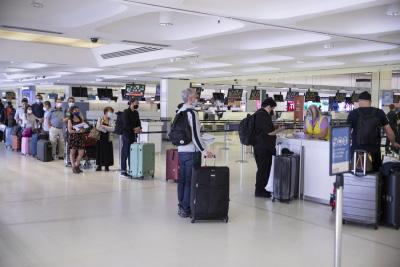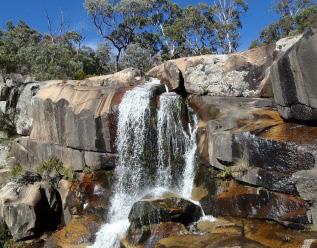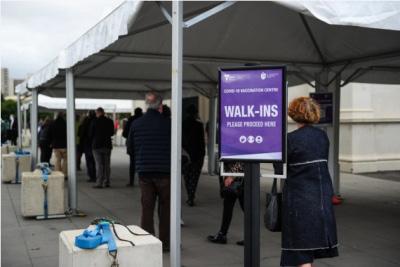
2 minute read
Sydney Airport reports 78.8% traffic recovery to pre-Covid level
In January, Australians took the top spot, followed by passengers from New Zealand and the US.
"It has been a challenging year for Sydney Airport since Australia reopened its border, but we are now seeing a steady stream of international travellers eager to explore the world again," said Geoff Culbert, the airport's chief executive officer.
Advertisement

The new study, published by the Commonwealth Scientific and Industrial Research Organisation, the national science agency, on Tuesday, demonstrated that the variability of ENSO reduces warming near the surface of the ocean but accelerates warming of deeper waters.
Cai Wenju, lead author of the study, said the findings
He said the modelling also revealed that warming around the edges of floating sea ice is slowed during this process, slowing down the melting of sea ice near the surface. Cai and his team examined 31 climate models under a high-emissions scenario. Those with increased ENSO variability showed a reduced upwelling of deep, warmer water as a result of less intense westerly winds, leading to a slower warming of the ocean surface.
Co-author Ariaan Purich from Monash University said that ENSO variability could have broad implications for the global climate.
Sydney, Feb 21 (IANS) Sydney Airport on Tuesday released a monthly report on its traffic performance, saying that a total of 3,120,000 passengers passed through it in January, which marked a 78.8 per cent recovery compared to the pre-Covid level. According to the report, domestic passenger traffic totaled 1,887,000, representing an 82.4 per cent recovery compared to January 2019, while 1,233,000 international travellers passed through the airport, registering a 73.9 per cent recovery, reports Xinhua news agency.
The airport also revealed the top 10 nationalities of passengers taking flights.
Culbert noted that in January, the number of US and British travellers came to only threequarters of their pre-Covid levels, while the number of passengers from previously popular European countries like Germany and France was even lower.
Canberra, Feb 19 (IANS) A second person in less than a week died at an iconic waterfall in Australia's capital.

Australian Capital Territory (ACT)
Police on Sunday confirmed that officers responded to reports a young man had fallen at Gibraltar Falls and found a 22-year-old unconscious in the water, who could not be revived and was pronounced dead at the scene, Xinhua News Agency reported. It came just days after 19-year-old Thomas Livingstone fell to his death while scrambling across rocks in front of the waterfall. The 22-year-old man accessed the site despite it being closed since Livingstone's death, while an investigation into safety precautions is conducted. The review could recommend the site is closed to the public permanently, a measure the government considers a last resort.
More than 600 people visit the site approximately 40 km south of Canberra every day in summer to swim and picnic.
Bren Burkevics, the ACT Conservator of Flora and Fauna, said in a statement following the first death that the review would take weeks.
"The ACT Parks and Conservation Service advises against swimming or walking in non-designated areas within our parks and reserves," he said.
"Visitors should always follow signage and advice from ACT Parks and Conservation Service staff, and stick to formed walking tracks."










